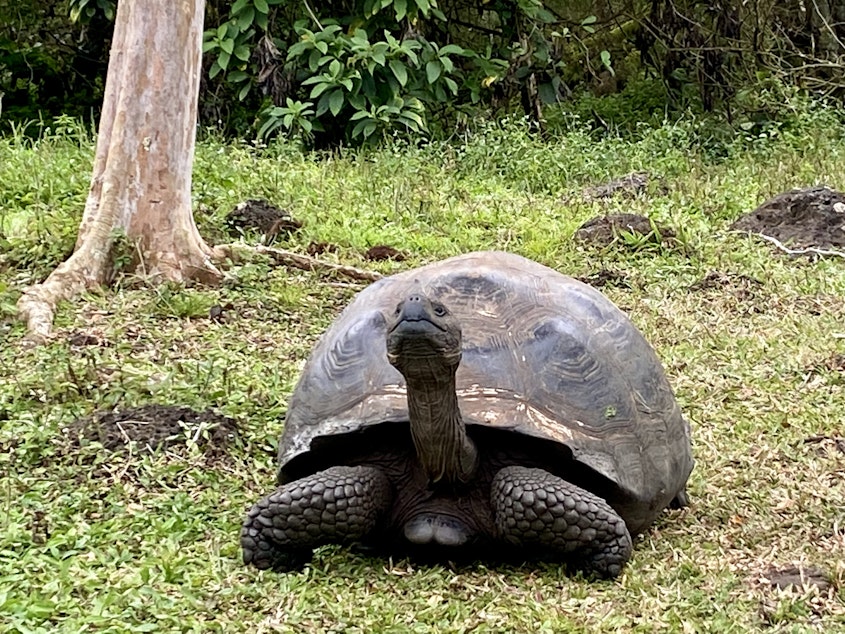Scientists discover ‘turtle power’ could help monitor radioactive materials

Northwest researchers have discovered that turtle shells can help track radioactive material through time–like “walking tree rings.” Scientists said these heroes in a half shell could help with environmental monitoring at nuclear waste and fallout sites around the world.
“Turtles often overlap with where nuclear events occurred, either nuclear testing or even nuclear deployments during (WWII), or nuclear processing, production type of sites at national laboratories,” said Cyler Conrad, an earth scientist at Pacific Northwest National Laboratory.
Conrad is the lead author of a study, recently published in the journal PNAS Nexus. In the study, the scientists tested shells from turtles that had died years earlier and were collected in the Marshall Islands, southwestern Utah, a bombing range in Arizona, the Savannah River Site and the Oak Ridge Reservation. But, researchers could also collect information from live turtles, Conrad said, “like clipping a fingernail.”
The overlap with nuclear sites often happens because turtles are found on every continent and like to live on the margins where humans don’t always live, he said. Those conditions also make for good places to test nuclear weapons, like the former Nevada Test Site, now the Nevada National Security Site, also home to desert tortoises.
Turtles are fairly susceptible to radioactive bioaccumulation, Conrad said. He found sediments often take up radioactive material very well. And turtles often burrow in the sediment or dig around in lagoons, bringing them into contact with radioactive material and giving them a unique ability to help scientists.
Sponsored
Their shells collect information on radioactive material they encounter.
“There's a real potential for using turtles and tortoises and even sea turtles as a real-time monitor of conditions out in the environment,” he said.
The colorful layers on top of turtle, tortoise and sea turtle shells are made of keratin–basically the same tissue that makes up human nails. But with turtles, the keratin forms in layers over time.
“It really resembles a tree ring-type sequence, where you have individual layers that are growing during certain periods of that turtle’s life,” Conrad said.
Scientists can connect the tiny samples of uranium from turtle shells to events in time–like a nuclear fallout from the test site in Nevada.
Sponsored
These long-lived turtles can help explain how radioactive materials affect different areas, he said.
And turtles aren’t the only species to help with this kind of detection. Another paper recently found boars in Germany have been exposed to cesium nuclear bomb fallout, partially from eating contaminated truffles.
But, turtles provide a new type of time-stamped record, Conrad said. Their shells clearly show the legacy of nuclear events on landscapes from Nevada to Fukushima.
“I was surprised how closely the known nuclear histories at these sites were tracked within the turtles,” he said. [Copyright 2023 Northwest News Network]
